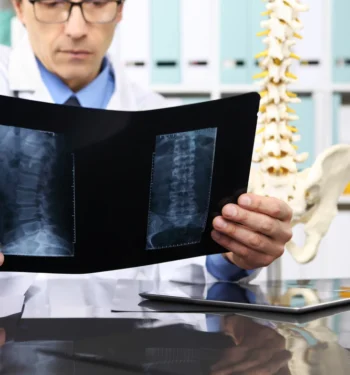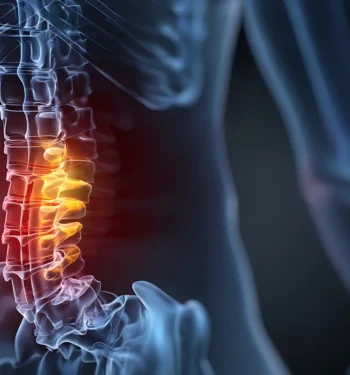When considering herniated disc surgery, many people wonder about the potential for visible scarring and how it may impact their lives after the procedure. Herniated disc surgeries, such as discectomies or spinal fusions, typically require an incision, and like any surgical intervention, they do result in some degree of scarring. However, the nature and visibility of these back surgery scars can vary greatly depending on the surgical technique, the location of the incision, your personal healing response, and how you care for the area after surgery.
Scarring is a natural outcome of the healing process as your body repairs itself post-surgery. While scars can be a source of concern for some, rest assured that advances in surgical methods — such as minimally invasive techniques — often lead to smaller, less noticeable scars. For many patients, scars fade over time and become less visible as the body continues its healing journey. If you’re searching for back surgery scars pictures or wondering specifically, “Does a herniated disc scar?” know that while a scar is inevitable, it doesn’t have to define your recovery or self-image.
Why Is Scarring a Concern?
Scars can affect both physical comfort and emotional well-being. Some people may be concerned about aesthetic outcomes like the appearance of their lower back or neck, while others may worry about the potential for scar tissue to cause stiffness or discomfort. Understanding the typical healing process and discussing your concerns early with your care team can help set realistic expectations and ease anxiety.
Key Questions Surrounding Recovery and Scars
You likely have several questions as you prepare for surgery: What will my scar look like? Can I prevent or minimize it? What steps can I take to aid proper healing? These questions are completely natural, and seeking answers demonstrates your commitment to a healthy recovery. We will address these concerns throughout this article, empowering you to take control of your healing process and embrace the next chapter of your life.
Your journey is unique, and your care should be too. Ask your doctor about Goodman Campbell and discover how compassionate, expert care can ease your transition from surgery to recovery.
What Does a Discectomy Scar Look Like?
If you are considering or recovering from herniated disc surgery, you might be wondering, “What does a discectomy scar look like?” The answer depends on several factors, such as the type of procedure performed, the location of the surgery (back vs. neck), and your individual healing process. Generally, scars from modern back surgeries, especially minimally invasive techniques, are smaller and tend to fade over time, often becoming less noticeable. However, for traditional or more extensive procedures, scars may be longer and more visible initially, but with proper care, they too can heal well.
Description of Typical Incision Sites for Herniated Disc Surgery
Most herniated disc surgeries involve an incision near the site of your symptoms — most commonly in the lower back for lumbar disc procedures, or in the neck for cervical disc operations. A typical micro lumbar discectomy often leaves a small, vertical scar in the lower spine region, typically less than two inches long. In the case of L4-L5 spinal fusion or more extensive decompressions, the incision might extend 3–6 inches, depending on your unique anatomy and the neurosurgeon’s approach. The neck incisions for cervical disc surgeries are generally even smaller and might be hidden in a crease, healing with minimal visible change. For real-world context, requesting “back surgery scar pictures” or “neck surgery scar pictures” from your care team can help set expectations.
Differences Between Minimally Invasive and Traditional Procedures
Thanks to innovative techniques, many patients now qualify for minimally invasive surgeries, which require only small incisions and cause less muscle and tissue disruption. As a result, these procedures usually leave a tiny scar that often becomes barely noticeable. In contrast, traditional open surgeries might necessitate a longer cut, especially with multilevel surgeries like L4-L5 spinal fusion. Both methods can achieve outstanding results, but recovery and scar appearance may vary. If you are concerned about scarring, ask your provider about minimally invasive options like those offered at specialized practices, like Goodman Campbell.
Visual References: What Patients Might See Post-Surgery
In the early weeks following surgery, your scar may appear red or pink, raised, or even slightly swollen. Over time, as your body heals, the color typically fades, and the texture flattens. Full healing can take up to a year, with many scars becoming pale and thin, especially when cared for with doctor-recommended ointments and protection from sunlight.
Mention of Scar Appearance Variations (Back vs. Neck vs. Fusion Surgeries)
The appearance and location of your scar will differ based on whether your procedure was performed on the back (lumbar), neck (cervical), or spine (fusion). Neck incisions often heal discreetly and may be nearly invisible in a short amount of time, particularly if they are placed in natural skin creases. For lumbar and fusion surgeries, the scar is generally located along the midline of the lower back or over the spine, varying in length according to the procedure. Some individuals have small, delicate scars, while others may have more pronounced ones, especially if multiple levels were fused.
Your surgical team understands how important it is for you and your family to feel comfortable and confident about your healing, both inside and out. The journey may be different for everyone, but you do not have to walk it alone. Ask your doctor about Goodman Campbell, and let them guide you toward an approach that best fits your needs and recovery goals.
Can You Fully Recover From a Herniated Disc Surgery?
Can you fully recover from a herniated disc surgery? For most patients, a full recovery from herniated disc surgery is not only possible, but it is also highly likely. Advances in surgical techniques, dedicated rehabilitation, and comprehensive follow-up care mean that the majority of individuals return to their daily activities and rediscover the freedom of movement. The true path to recovery, however, is influenced by factors such as the specific surgical method used, overall health, age, and commitment to recommended postoperative routines.
Recovery timelines can vary, but many patients begin to see significant improvements within a few weeks of herniated disc surgery. Initially, rest and gentle mobility are prioritized, followed by the introduction of physical therapy — a crucial component that helps your back regain strength and flexibility. For those who undergo minimally invasive procedures, the healing process often moves even more quickly, with less discomfort and shorter hospital stays.
Embracing physical therapy and targeted exercises for scar tissue in lower back areas can make a remarkable difference in your recovery. Such exercises increase circulation to the area, reduce stiffness, and help prevent problematic scar tissue from limiting your mobility. Most programs are tailored to your specific needs and may include walking, gentle stretches, and eventually core-strengthening workouts designed to support your spine.
Long-term outcomes are encouraging — most people return to work, hobbies, and family activities after surgery. Inspiring patient stories, such as individuals who once struggled with pain but now enjoy biking, walking, and playing with loved ones again, highlight what is possible when expert care meets a motivated patient.
Factors such as your dedication to following postoperative instructions, proper nutrition, and overall health can directly impact both the speed and quality of your recovery. Chronic health conditions, smoking, or returning to heavy lifting too soon may slow your healing. Your surgeon can provide a clear, personalized plan to maximize your recovery potential and address any unique challenges you may face.
With compassionate guidance and a comprehensive recovery plan, your journey back to a fulfilling, active life is well within reach. Ask your doctor about Goodman Campbell to discover how specialized expertise can support your healing and get you back to the life you love.
How to Prevent and Treat Scar Tissue After Back Surgery
How to Prevent Scar Tissue After Spinal Fusion?
Scar tissue, also known as fibrosis, is a natural part of the healing process after back surgery, including spinal fusion and microdiscectomy. While a certain amount of scar tissue is inevitable, following your surgeon’s guidance can help minimize excessive buildup and support an optimal recovery. Prevention methods begin even before your procedure, through preparation and a proactive postoperative plan tailored by your medical team.
Pre-surgery, you can help reduce risk by stopping smoking, maintaining a healthy weight, and following all preoperative instructions. Smoking, in particular, has a significant negative impact on healing and can lead to more pronounced scar tissue formation. After surgery, adhering to your provider’s advice on activity modification is crucial. Gentle movement, when recommended, helps promote blood flow and prevent the development of excessive scar tissue.
The Importance of Post-Surgical Exercises
Specialized exercises for scar tissue in lower back areas are often prescribed to patients after back surgery. These targeted movements can help improve flexibility and strength, and in many cases, they limit the negative impacts of scar tissue on your mobility. Goodman Campbell’s patient education guides include detailed, easy-to-follow exercise plans. These should be performed only under the supervision of your healthcare provider or physical therapist to ensure you heal safely and effectively.
Available Treatments for Scar Tissue That Forms
If scar tissue becomes problematic, such as causing pain or limiting movement, several treatments for scar tissue after back surgery are available. These may include physical therapy, specific stretching programs, and in some cases, minimally invasive procedures to help break up fibrous tissue. For rare, severe cases, it’s possible to consider surgical removal of scar tissue, though this is typically reserved for situations where other options have failed.
Lifestyle Factors to Aid Scar Healing and Prevention
Your lifestyle choices can play a significant role in how your body heals and how much scar tissue develops. Eating a balanced, nutrient-rich diet, staying hydrated, and avoiding smoking all support better healing outcomes. Additionally, following instructions regarding wound care and infection prevention is essential to reduce the risk of complications that might contribute to excessive scarring.
When to See a Specialist for Scar Tissue Removal
If you notice persistent pain, tingling, or limited mobility, despite following recommended therapies, it may be time to consult a specialist. Ask your doctor if spinal scar tissue can be removed in your case, or if other interventions might relieve your symptoms. Early intervention can make a big difference in your overall comfort and function.
Most importantly, remember that you are not alone throughout this journey. For questions about how to treat scar tissue in lower back areas, or to receive a personalized care plan, ask your doctor about Goodman Campbell. Their compassionate, experienced team is committed to supporting your unique recovery every step of the way, helping you get back to living the life you love with confidence and comfort.
Conclusion: What to Expect and When to Seek Help
Deciding to undergo herniated disc surgery is a brave step toward reclaiming your mobility and reducing pain. Naturally, questions about scarring and the healing process are common. The journey to recovery is different for everyone, but knowing what to expect can help ease anxieties, inspire hope, and empower you on your path forward. Scars, both visible and beneath the surface, are a normal part of the healing process, and with the right care and a supportive medical team, most patients can recover and return to the activities they love.
Can You Fully Recover From a Herniated Disc Surgery?
A full recovery after herniated disc surgery is absolutely possible for many patients, especially with advanced surgical techniques and integrated rehabilitation programs. While individual results will differ, a successful recovery involves healing from surgery, minimizing scar tissue, and gradually regaining strength and flexibility. Using back surgery scars pictures as references, you may notice that most incisions heal to thin, pale lines over time, and ongoing care can further improve their appearance.
Commitment to physical therapy and gentle exercises tailored to your needs can make a dramatic difference in outcome. Your recovery will also be influenced by factors like your health before surgery, adherence to post-operative guidelines, and consistent check-ins with your healthcare provider. Remember, even if some scar tissue forms, it very rarely gets in the way of a joyful, active life after surgery.
How to Prevent Scar Tissue After Spinal Fusion?
While some scar tissue is normal after any surgery, there are proven steps to help limit its formation and impact. Early movement under medical supervision, specialized exercises, and proper wound care can all decrease the buildup of problematic scar tissue. In cases where scar tissue causes discomfort or limits mobility, there are safe, effective methods to treat scar tissue after back surgery, from physical therapy interventions to advanced medical procedures.
Staying active, eating well, avoiding smoking, and attending all follow-up appointments play a crucial role in your body’s recovery process. If you’re concerned about scarring after spinal fusion or want guidance on the best ways to heal, do not hesitate to reach out to your care team for medical advice early and often.
When Should You Reach Out for Help?
If you ever notice unusual redness, swelling, pain, or if a scar seems to worsen over time, these may be signs that you need medical attention. Early intervention can prevent minor issues from becoming major concerns. Open communication with your healthcare team paves the way for a smoother recovery and peace of mind.
Scars are a testament to your strength and a reminder of the endurance that got you through a challenging chapter. If you have questions or concerns about your healing process or want the very best support through your journey, rely on the expertise and compassionate care available to you. Your health and happiness are worth it! Ask your doctor about Goodman Campbell for care that’s with you every step of the way.


